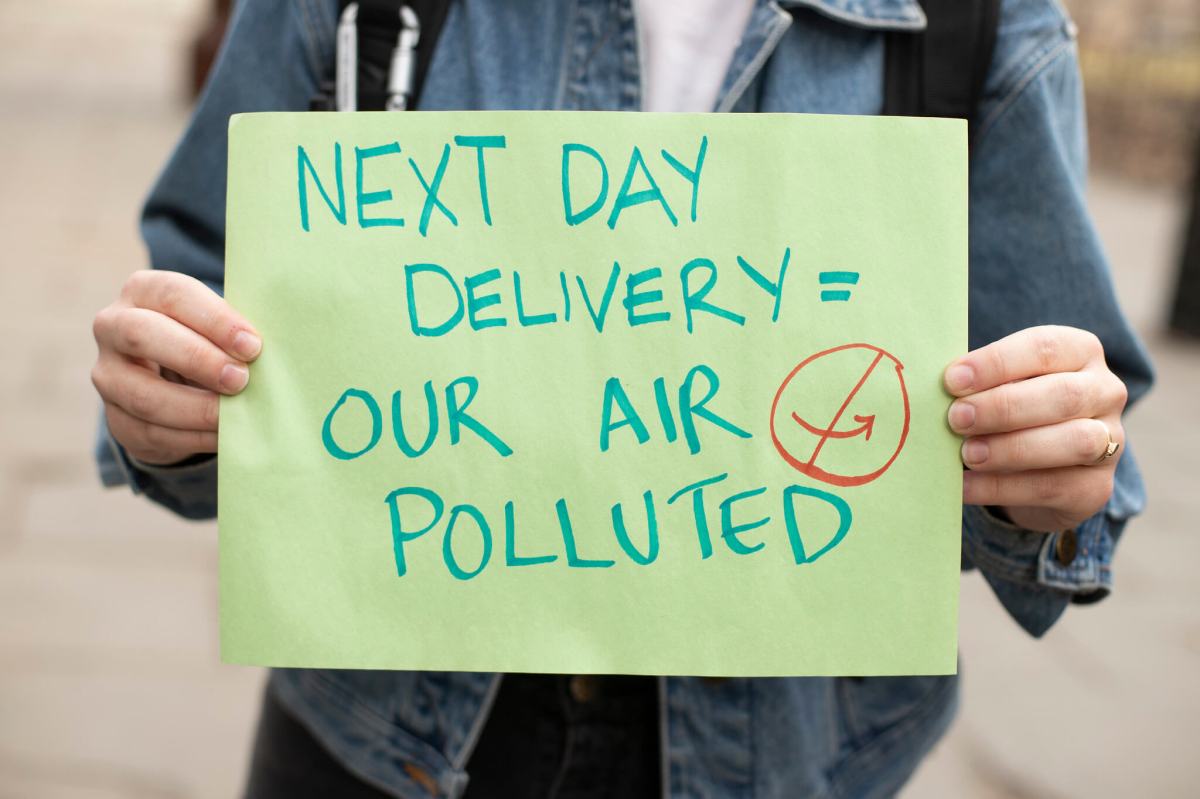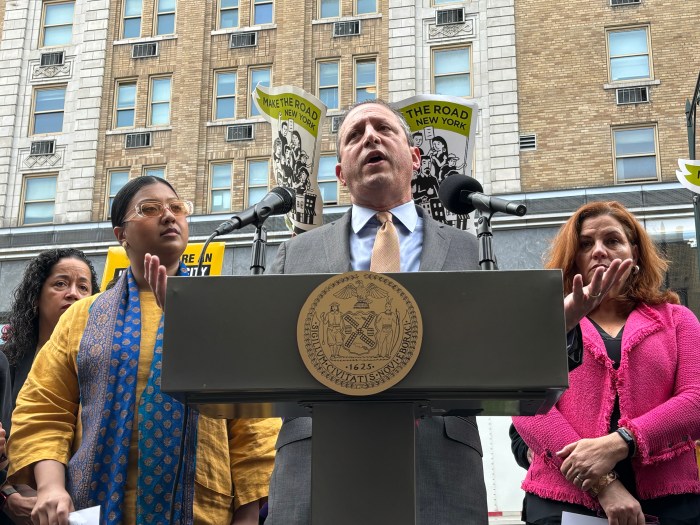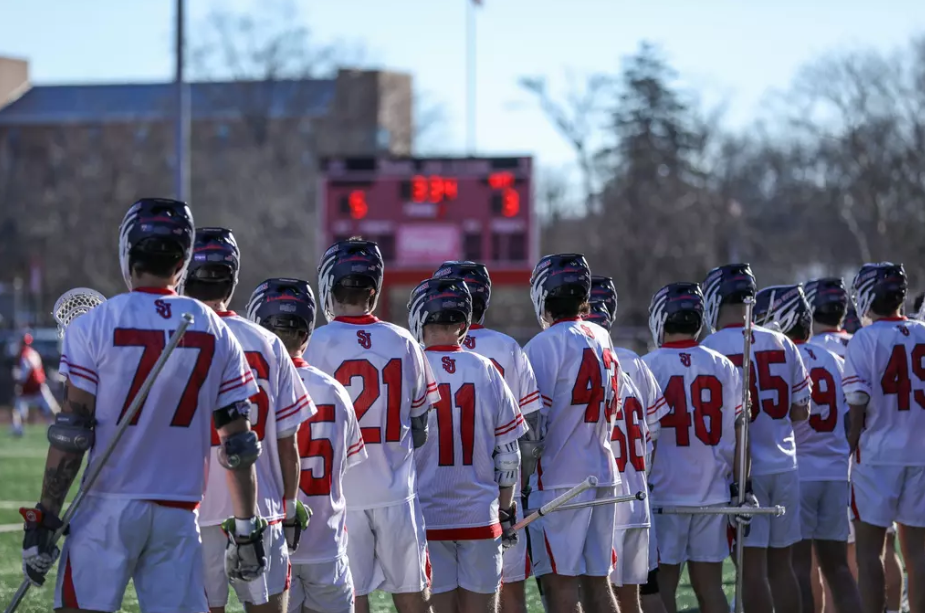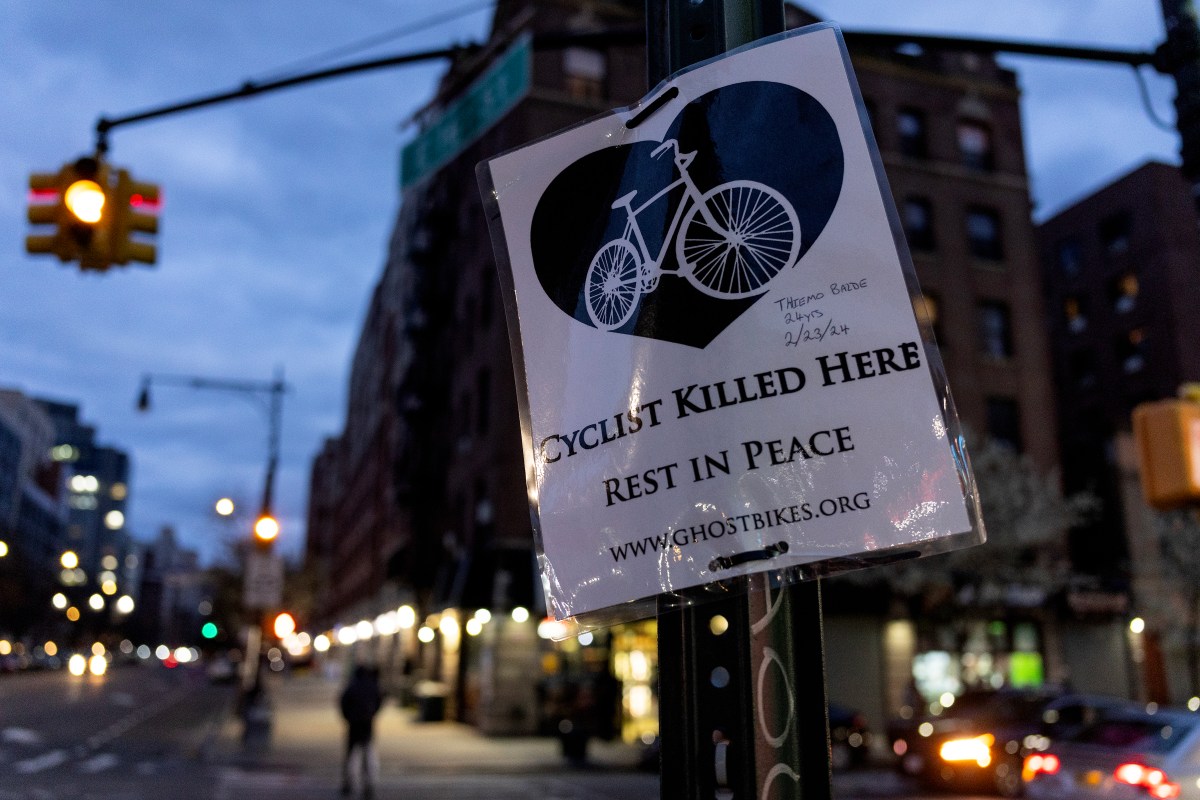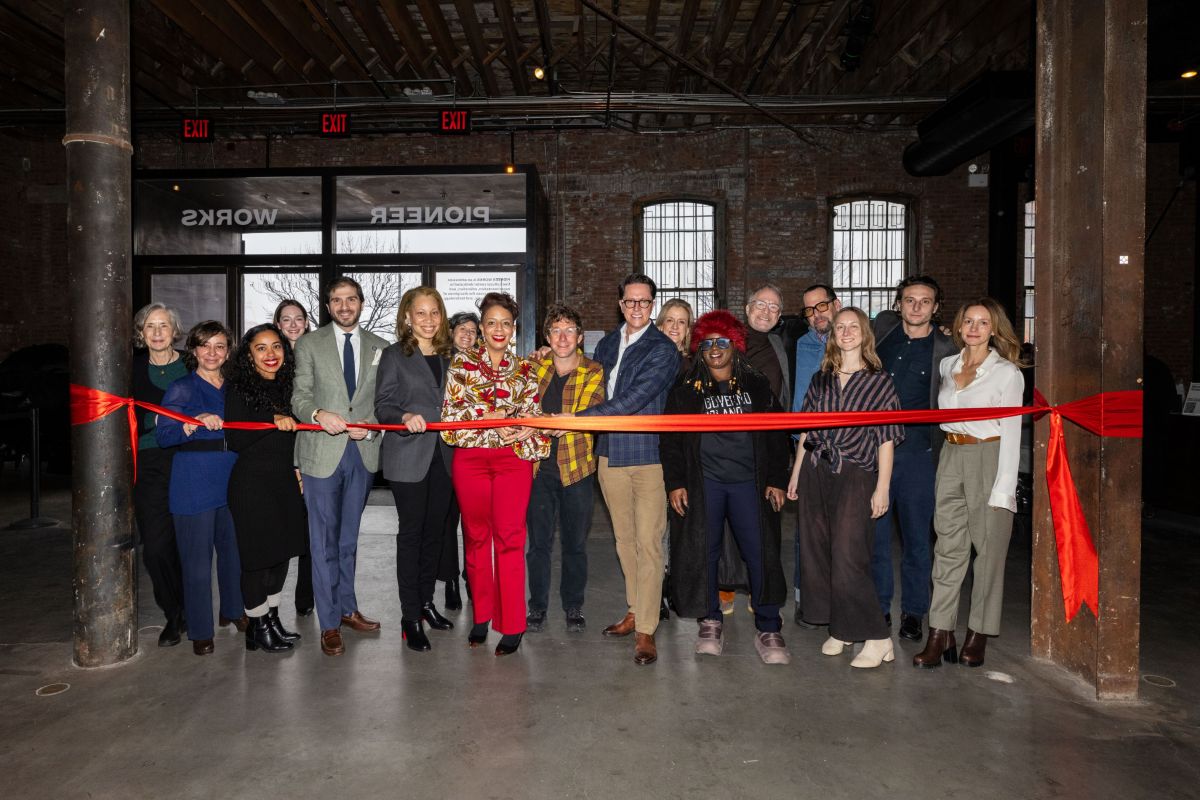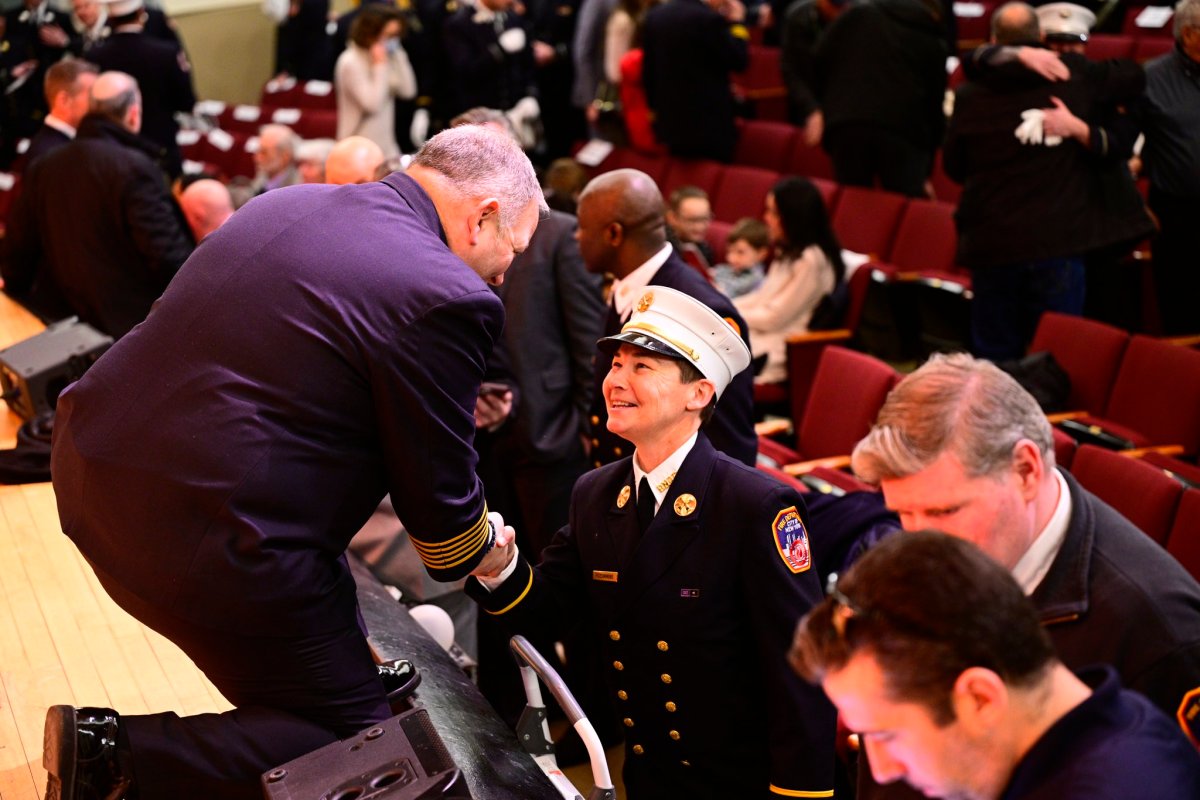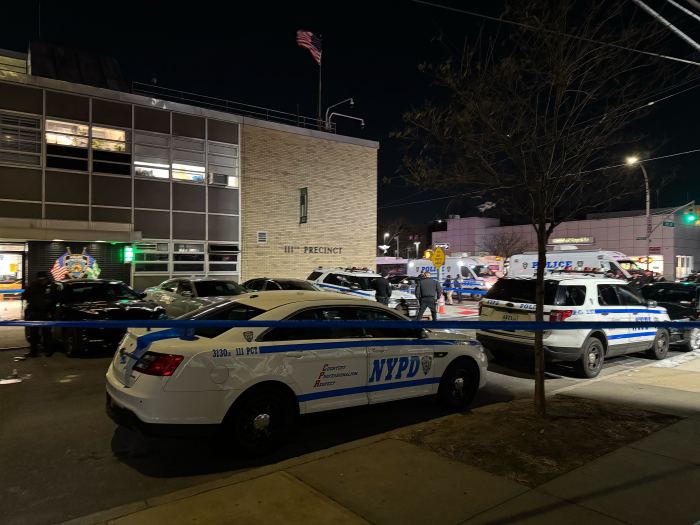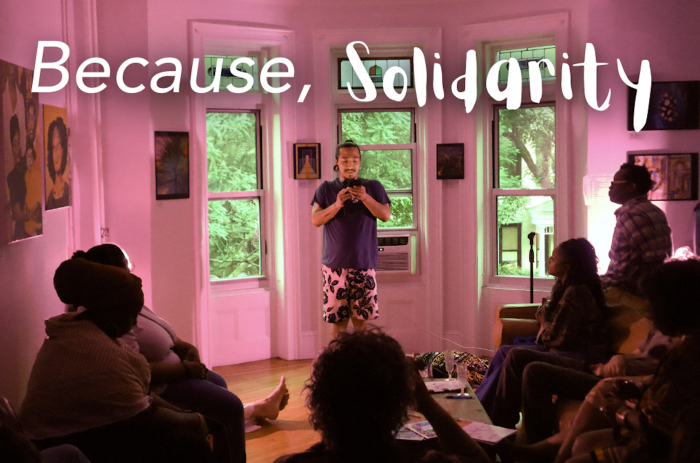Elected officials on the City Council are seeking to blunt the proliferation of “last-mile logistics” warehouses run by Amazon and other large companies, arguing the rapid package deliveries they facilitate have caused an epidemic of truck traffic, and with it air and noise pollution, in communities of color.
Such facilities have rapidly popped up in the Big Apple since the pandemic, as the demand for extremely rapid delivery of goods has grown. Amazon opened its first fulfillment center on Staten Island in 2018, but as of 2022 the e-commerce giant had placed more than 20 last-mile hubs in New York, according to researchers at the Center for Resilient Cities & Landscapes. And Amazon is far from the only company utilizing such facilities.
The explosive growth has not been distributed evenly across the city, electeds argue, with warehouses opening left and right in neighborhoods already zoned for industrial uses, where they can site “as-of-right” without any zoning changes. Those are largely composed of waterfront neighborhoods like Sunset Park, Gowanus, and Red Hook in Brooklyn, Maspeth in Queens, and Hunts Point in the Bronx.
But compared to the warehouses of yore, last-mile facilities see massively increased levels of truck traffic, advocates say, which by extension leads to greater concentrations of air and noise pollution. Of particular concern is the warehouses’ siting in “environmental justice communities,” those areas with disproportionately low-income and non-white populations that have historically borne the burdens associated with polluting industries’ siting in their neighborhoods.

“Our communities have been dealing with polluting infrastructure for years,” said Council Member Alexa Avilés, a Democrat whose Brooklyn waterfront district includes some of the city’s highest concentrations of last-mile warehouses, at a press conference on Thursday. “This is environmental racism. And last-mile facilities follow the same pattern, of dumping environmental burdens on low-income communities of color. But we are here to say, it is enough. In 2023, we cannot and will not continue to let these age-old patterns of discrimination and destruction be unfettered within our communities.”
And so on Thursday, City Council members and advocates threw their political weight behind proposed amendments to the city’s zoning code aimed at regulating where companies like Amazon can site their last-mile facilities. The amendments would require companies to seek a “special permit” to site last-mile warehouses in industrial zones where they can presently build facilities as-of-right. The permit would only be issued if the proposal meets three conditions:
- The facility is not within 1,000 feet of a school, park, nursing home, or public housing development.
- The facility is not within 1,000 feet of another last-mile facility.
- If in a “significant maritime industrial area” on the city’s waterfronts, the facility must conduct at least 80% of deliveries by boat.
The zoning text amendments are paired with bills requiring the city study the impacts of heavy truck traffic on local communities and infrastructure, ways to redesign streets to limit commercial truck traffic in residential areas, and the feasibility of tracking truck routes with GPS. Other existing bills included in the package would require air quality monitoring on “designated ‘heavy-use’ thoroughfares” and translate the existing air quality complaint portal into multiple languages.
“If you are a company that’s doing business in our neighborhoods, you have to do it responsibly,” said Council Member Jennifer Gutiérrez, who reps parts of Williamsburg, Bushwick, and Ridgewood. “Take notice that we are trying to reach our climate justice goals, you are being responsible, you are causing not just truck traffic and noise traffic, you are leaving long-term effects in our communities. And these bills are calling that these companies…be responsible, take our communities into account so that we can breathe cleaner air.”
The warehouses have proliferated since the pandemic as demand for fast package delivery, including same-day fulfillment, soared. Amazon’s profits and stock price soared during the pandemic as lockdown led to increased demand for home delivery.

Amazon’s stock has declined since its 2021-22 highs along with much of the tech sphere, but Americans’ insatiable appetite for same-day delivery remains sky-high. By the end of 2021, New Yorkers were receiving about 2.3 million packages per day, up from 1.8 million pre-pandemic, Crain’s reported, citing the Rensselaer Polytechnic Institute’s Center of Excellence for Sustainable Urban Freight Systems.
A spokesperson for Amazon said the company “always tr[ies] to locate our facilities as close as possible to our customers and employees,” with over 60 locations statewide, and “strives to be a great neighbor and strong community partner.” The spokesperson, Simone Griffin, did not take a position on the zoning proposals but said that the company is on track to power its operations entirely by renewable energy by 2025 and reach net-zero carbon emissions by 2040.
Amazon also does not only use trucks and vans to make its deliveries, said Griffin, noting the trillion-dollar company uses micromobility tech for some last-mile deliveries and currently uses cargo bikes to make deliveries for Whole Foods and Amazon Fresh in Manhattan and Brooklyn.
“As part of The Climate Pledge, Amazon remains focused on improving its efficiency through more-sustainable solutions, including electric vehicles, cargo bikes, on-foot deliveries and alternative fuel options as well as wind and solar power across our network, in and around all the communities in which we operate,” said Griffin. “Our progress will help us achieve long-term, systemic change that improves the well-being of people, communities, and the planet.”
Members of the “Last Mile Coalition,” which submitted the zoning text amendment proposal to the City Planning Department and is pushing for its adoption, say they are not seeking to squash the machinery of the city’s supply chain. Instead, they say last-mile developers should have to go through a public review process — like many developers seeking rezonings. They also want to prevent warehouse clustering in certain neighborhoods and to promote alternative means of delivery besides large, polluting trucks.
“The Adams administration and the Department of City Planning must protect our communities and regulate these facilities by mandating public review and environmental studies to prevent clustering in frontline communities,” said Kevin Garcia, transportation planner at the New York City Environmental Justice Alliance, whose group is part of the coalition.
Council District 38, which includes Sunset Park, Gowanus, and Red Hook and is represented by Avilés, has rates of air and noise pollution above the citywide average, according to Transportation Alternatives’ Spatial Equity tool. 77% of District 38’s population is either Latino or Asian, according to Census data.
So far, DCP has declined to consider the amendments, the advocates say. In his “Get Stuff Built” plan, Mayor Eric Adams lent his support to legislation requiring the creation of “transportation management plans” for any proposed development, including as-of-right, that would “generate significant truck and vehicle traffic.” Such plans would require companies to prioritize marine and rail transportation as well as non-fossil fuel motor vehicles.
The mayor’s office referred a request for comment to the City Planning Department. Agency spokesperson Joe Marvilli said that the Adams administration is sympathetic to the coalition’s plight and goals, but is concerned about the economic impacts on the distribution of goods and how the city’s notoriously lengthy public review process could impact the creation of new small businesses. He also noted other efforts the city is undertaking in the interim, including incentivizing companies to electrify their truck fleet or piloting the expanded use of cargo bikes.
“Too often, communities of color are forced to bear the burden of poor air quality and public health consequences simply because of where they live,” said Marvilli. “Our administration is committed to replacing a 20th-century, truck-based delivery model with a 21st-century, resilient transportation network that reduces emissions and traffic while protecting and creating good jobs. We are working on creative solutions to deliver a greener, healthier city and look forward to reviewing these proposals.”
This story was updated on Feb. 17, 2023 at 4:30 pm with comment from Amazon.
Read more: City Plans to Expand BQE Cantilever Back to Six Lanes



